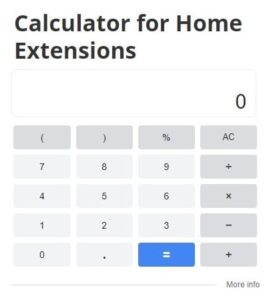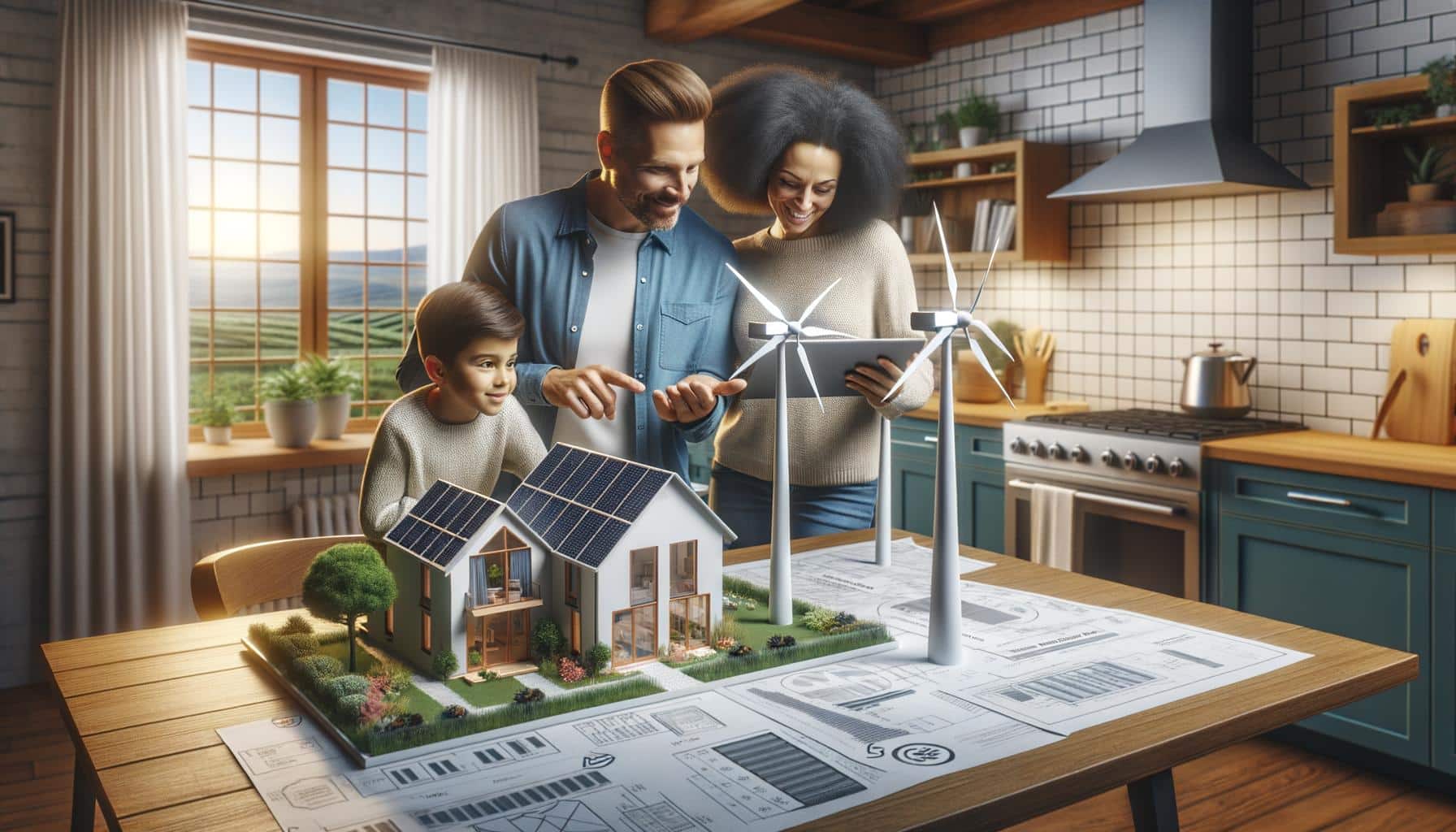
At Home Owners Association, we often receive questions about tax deductions for energy-efficient home improvements. Many homeowners wonder, “Can you deduct energy-efficient home improvements in Australia?”
While this article focuses on U.S. tax deductions, it’s important to note that different countries have their own incentives. We’ll explore the eligible improvements, how to claim deductions, and important considerations to keep in mind.
What Home Improvements Qualify for Tax Deductions?
At Home Owners Association, we help homeowners make smart decisions about their properties. Energy-efficient improvements can qualify for tax deductions, allowing you to save on taxes while reducing energy bills. Let’s explore some common improvements that offer tax benefits.
Solar Panel Installations
Solar panels reduce carbon footprints and energy costs. The federal government offers a Residential Clean Energy Credit for solar panel installations. This credit allows homeowners to deduct 30% of the installation cost from their federal taxes. There’s no upper limit on this credit (making it a significant incentive for those considering solar energy).
Energy-Efficient Windows and Doors
Upgrading to energy-efficient windows and doors improves your home’s insulation. The Energy Efficient Home Improvement Credit offers a deduction of up to $600 for qualifying windows and skylights. For exterior doors, you can claim up to $250 per door (maximum $500 total). These improvements qualify for tax deductions and help reduce heating and cooling costs year-round.
Insulation Upgrades
Proper insulation maintains comfortable home temperatures and reduces energy waste. The IRS allows homeowners to claim a credit for 30% of the costs of insulation materials and air sealing products. This includes materials like fiberglass batts, blown-in insulation, and weatherstripping. While labor costs for installation don’t qualify, the materials themselves can provide a substantial tax benefit.
High-Efficiency Heating and Cooling Systems
Upgrading your HVAC system to a more efficient model leads to significant energy savings and tax benefits. Heat pumps, for instance, qualify for a tax credit of up to $2,000. This is separate from the $1,200 limit for other home improvements (allowing for a potential total credit of $3,200 in a single year). Other qualifying systems include energy-efficient central air conditioners and water heaters.
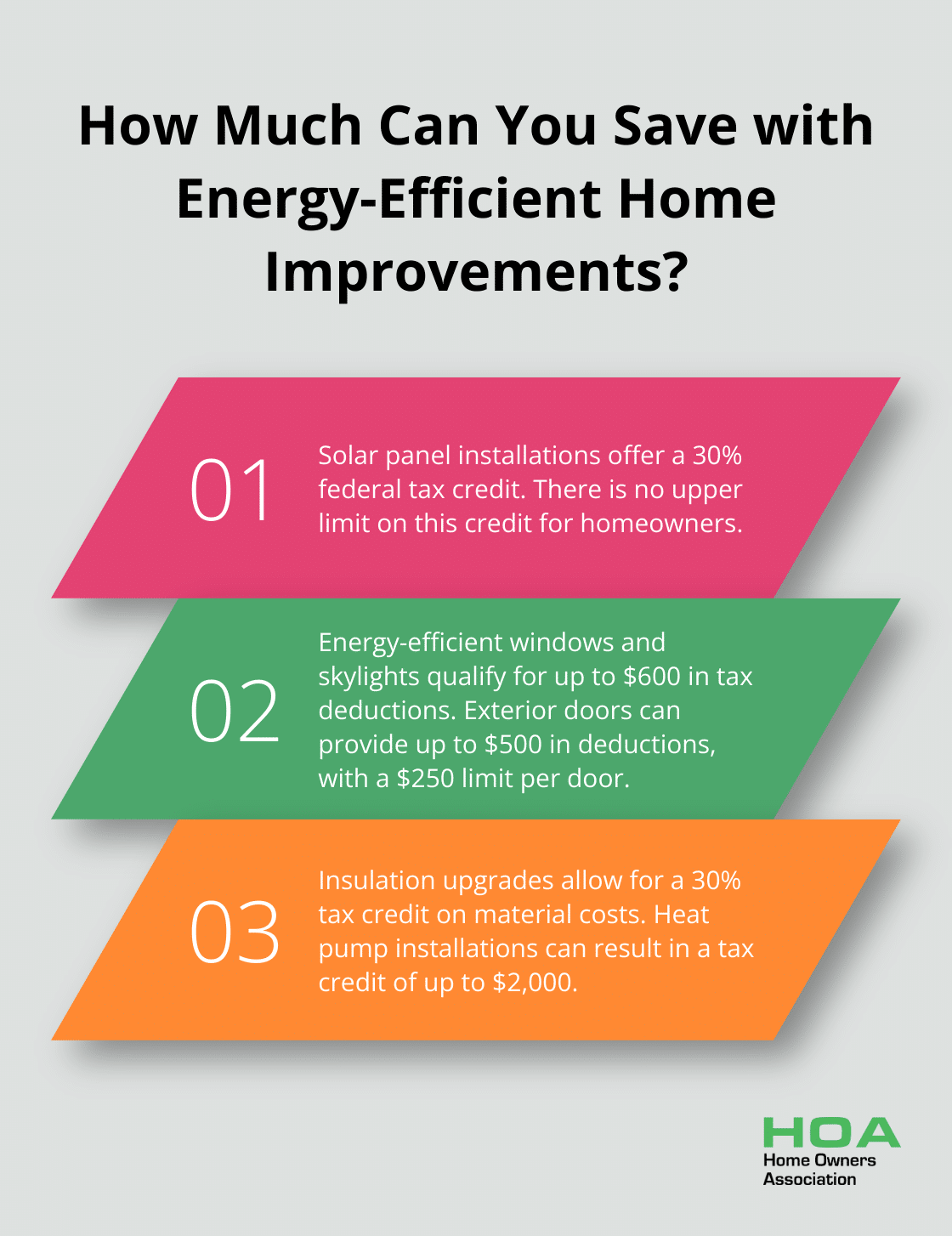
These tax credits are subject to change, and specific requirements must be met for each improvement. We recommend consulting with a tax professional to ensure you maximize your potential deductions while complying with all IRS guidelines.
Now that we’ve covered the qualifying improvements, let’s move on to the process of claiming these tax deductions. Understanding how to properly document and file for these credits is essential to reap the full benefits of your energy-efficient upgrades.
How to Claim Tax Deductions for Energy-Efficient Improvements
Gather Your Documentation
The first step to claim your tax deductions is to collect thorough documentation. Keep all receipts, invoices, and manufacturer certifications for your energy-efficient upgrades. These documents should clearly show the purchase date, cost, and energy efficiency ratings of the products you’ve installed. For example, if you’ve installed new windows, you’ll need documentation showing they meet the Energy Star Most Efficient criteria to be eligible for the 25C Federal Tax Credit.
Complete IRS Form 5695
To claim your energy efficiency tax credits, you must complete IRS Form 5695, Residential Energy Credits. This form is divided into two parts: Part I for the Nonbusiness Energy Property Credit and Part II for the Residential Energy Efficient Property Credit.
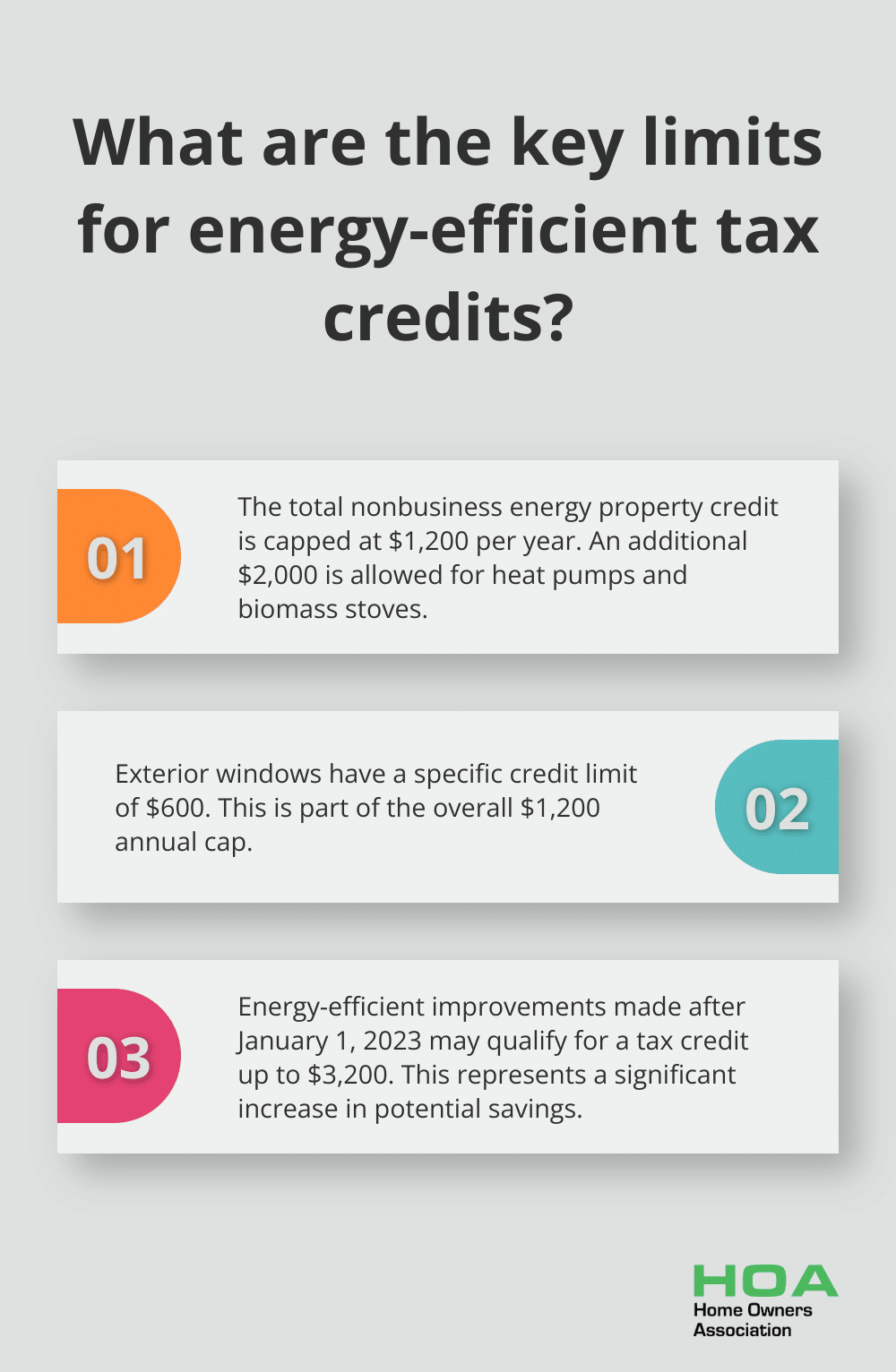
For most energy-efficient home improvements (like insulation, windows, and HVAC systems), you’ll focus on Part I. Solar panel installations and other renewable energy systems are reported in Part II. The form requires you to itemize your improvements and their costs, so have your documentation ready.
Calculate Your Credit
The calculation process can be complex, as different improvements have varying credit limits. For instance, the credit for exterior windows is capped at $600, while heat pumps have a separate $2,000 limit.
It’s important to accurately calculate your credit to avoid errors that could trigger an IRS audit. The total nonbusiness energy property credit is limited to $1,200 per year (except for heat pumps and biomass stoves which allow an additional $2,000).
File Your Taxes Correctly
Once you’ve completed Form 5695, transfer the credit amount to your Form 1040. If you’re using tax preparation software, it should guide you through this process. However, double-check that the credit amount is correctly entered on your return.
These credits are nonrefundable, meaning they can reduce your tax liability to zero, but you won’t receive a refund for any excess credit. If you make qualified energy-efficient improvements to your home after Jan. 1, 2023, you may qualify for a tax credit up to $3,200.
A tax professional can help you navigate these complexities while maximizing your deductions. Tax deductions for home renovations can be complex, and a professional will ensure you’re claiming all eligible credits and following the latest IRS guidelines.
Now that you understand how to claim your tax deductions, let’s explore some important limitations and considerations you should keep in mind when planning your energy-efficient home improvements.
What Are the Limits on Energy-Efficient Tax Credits?
Credit Caps and Limitations
Through 2032, federal income tax credits are available to homeowners, that will allow up to $3,200 annually to lower the cost of energy efficient home upgrades. This includes improvements like high-efficiency systems such as heat pumps and biomass stoves.
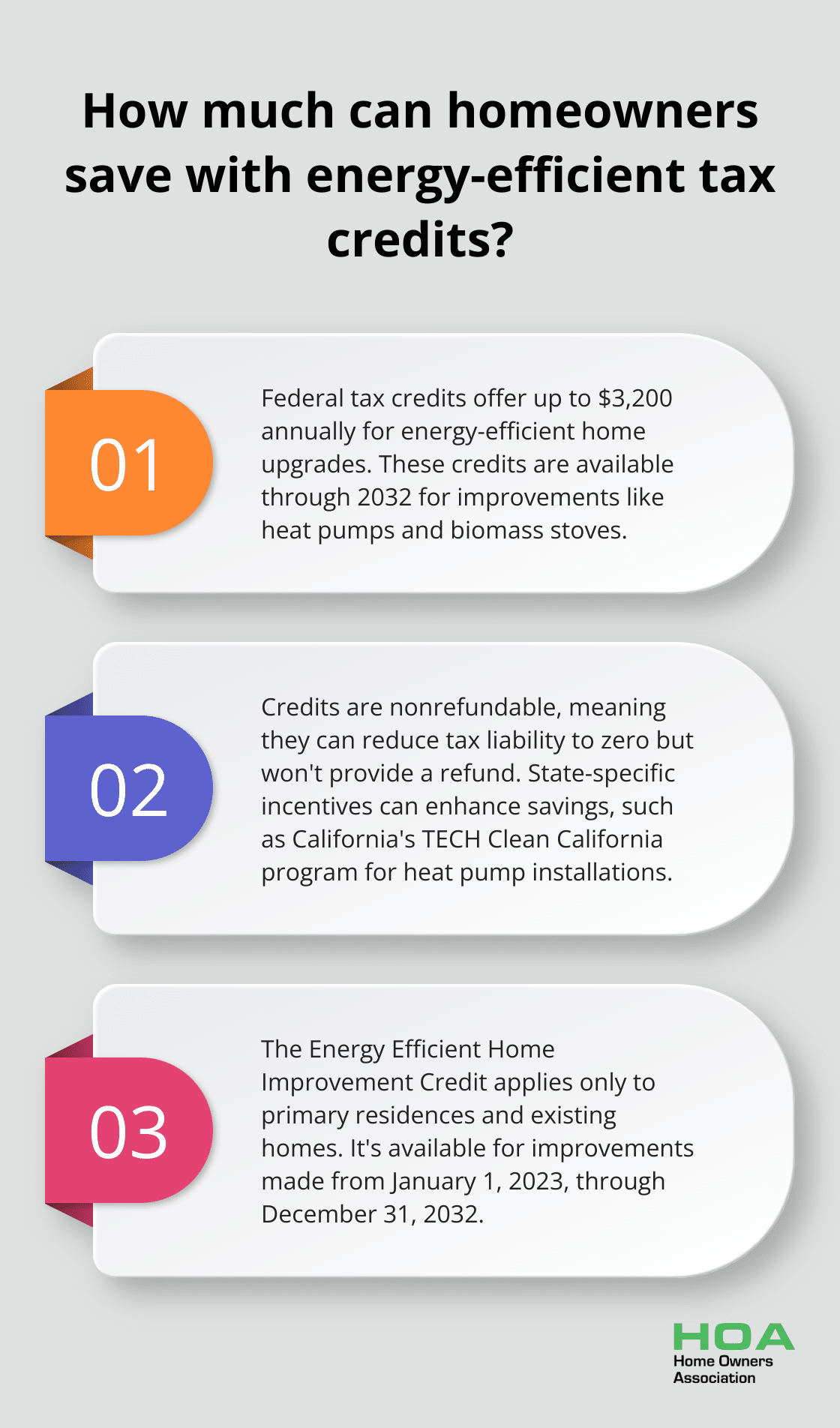
These credits are nonrefundable. If your credit exceeds your tax liability, you won’t receive the difference as a refund. For instance, if you owe $1,000 in taxes and qualify for a $1,500 credit, your tax bill will reduce to zero, but you won’t receive the extra $500.
State-Specific Incentives
While federal tax credits offer significant benefits, many states provide additional incentives for energy-efficient improvements. California’s TECH Clean California program offers incentives for heat pump installations. Customers who receive a TECH Clean California incentive for a heat pump water heater must enroll in an approved demand response program. New York provides rebates up to $1,000 for air source heat pumps through NYSERDA. These state-level incentives can enhance your overall savings (it’s worth researching what’s available in your area).
Primary Residences vs. Rental Properties
The eligibility criteria for these tax credits differ between primary residences and rental properties. The Energy Efficient Home Improvement Credit typically applies only to your primary residence. Landlords might deduct the cost of energy-efficient improvements as business expenses on their rental properties.
For primary residences, improvements must occur on an existing home. New construction doesn’t qualify for these credits (this distinction matters for homeowners planning major renovations or considering buying a newly built home).
Timeframes and Deadlines
The current energy efficiency tax credits have specific timeframes. The Energy Efficient Home Improvement Credit applies to improvements made from January 1, 2023, through December 31, 2032. Homeowners should plan their improvements accordingly to maximize their tax benefits within this window.
Product Specifications
To qualify for tax credits, products must meet specific energy efficiency standards. For example, windows and doors must meet Energy Star Most Efficient criteria. Heat pumps must achieve certain Seasonal Energy Efficiency Ratio (SEER) ratings. Homeowners should verify that their chosen products meet these specifications before purchase and installation.
Final Thoughts
Energy-efficient home improvements offer substantial tax savings and long-term energy cost reductions. These upgrades lower your carbon footprint and provide significant financial incentives, with available tax credits reaching up to $3,200 annually. The improvements enhance your home’s comfort, increase its value, and contribute to a more sustainable future.
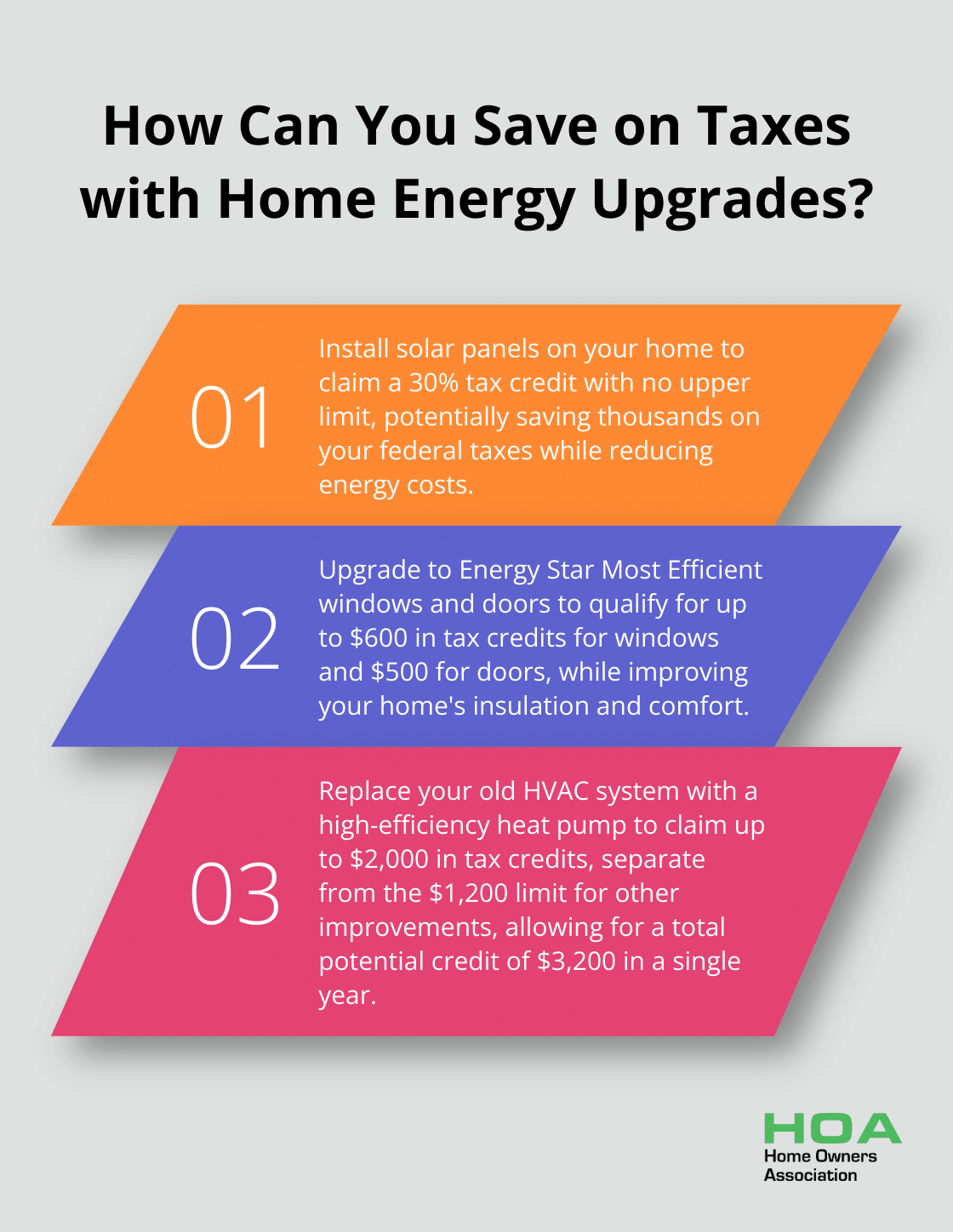
Many homeowners ask, “Can you deduct energy-efficient home improvements in Australia?” The answer varies, as different countries have their own incentive programs. For specific information about Australian tax deductions and energy efficiency programs, we recommend visiting Home Owners Association.
Given the complexities of tax laws and specific requirements for each improvement type, consulting with a tax professional is advisable. They will help you navigate the intricacies of claiming these credits, maximize your potential deductions, and keep you informed about changes in tax legislation (which might affect your home improvement plans). Our team specializes in providing Melbourne homeowners with expert advice on local regulations, incentives, and best practices for home improvements.





